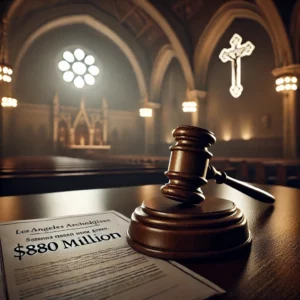Decade-Long Commission Work Faces Mixed Reception
The Pontifical Commission for the Protection of Minors has released an unprecedented report detailing its decade-long efforts to address clerical sexual abuse within the Catholic Church. The landmark document, released Tuesday at the Vatican, outlines the commission’s work to implement safeguards and support victims while acknowledging significant challenges in addressing this critical issue.
5 Key Points
- The first-ever public report from the Vatican’s abuse prevention commission.
- The commission faced limited access to the Vatican’s abuse data.
- Financial constraints hamper prevention efforts in some dioceses.
- Victims’ advocates criticize the pace and scope of reforms.
- The commission plans regular public reporting moving forward.
Victims at the Center: A Shift in Focus
Cardinal Sean O’Malley, who leads the commission, opened Tuesday’s press conference with a direct apology to abuse survivors, marking a significant shift in the Church’s approach. “Nothing we do will ever be enough to fully repair what has happened,” O’Malley acknowledged, emphasizing the commission’s commitment to placing victims’ experiences at the forefront of reform efforts. This victim-centered approach represents a departure from previous institutional responses that critics say prioritized the Church’s reputation over survivors’ needs.
Systemic Challenges Plague Reform Efforts
The report reveals substantial obstacles in implementing comprehensive abuse prevention measures. Commission members faced restricted access to crucial Vatican data on abuse cases, limiting their ability to assess the full scope of the crisis. Additionally, the report highlights a disparity in resources among dioceses worldwide, with some lacking basic funding for essential training programs and victim support services.
Progress Through Practical Steps
Despite facing significant challenges, the commission has focused on achievable reforms. Their work includes securing funding for abuse prevention training in underfunded dioceses and establishing victim support services in regions previously lacking such resources. Commission member Juan Carlos Cruz, himself a survivor of abuse, characterized the report as “a start” while acknowledging it may not satisfy all stakeholders’ expectations.
Critics Question Pace and Impact
The report’s release has sparked intense debate about the effectiveness of the Church’s response to abuse. Anne Barrett Doyle, a longtime tracker of clergy abuse, criticized the commission’s methodology, suggesting their information sources were “highly prejudiced.” Other advocates question why the commission continues to work within existing Church structures they view as fundamentally flawed. The resignation of several founding commission members in its early years underscores the frustration many feel about the pace of reform.
FAQ
Q: Do you qualify for a clergy abuse lawsuit?
A: To see if you qualify, click here.
Q: What is the Pontifical Commission for the Protection of Minors?
A: It’s a Vatican body established to improve abuse prevention measures and support for victims within the Catholic Church.
Q: Why is this report significant?
A: This is the first public report detailing the commission’s work and challenges in addressing clerical abuse.
Q: What are the main criticisms of the report?
A: Critics argue it relies on biased sources and doesn’t push hard enough for systemic change within the Church.
Q: What concrete steps has the commission taken?
A: They’ve helped fund training programs and victim services in underserved dioceses while advocating for greater transparency.
Q: How will progress be monitored going forward?
A: The commission has committed to regular public reporting on their work and achievements.
Citations
Dallas, K. (2024, October 29). 4 takeaways from a first-of-its-kind report on sexual abuse in the Catholic Church. Deseret News. https://www.bishop-accountability.org/2024/10/4-takeaways-from-a-first/






